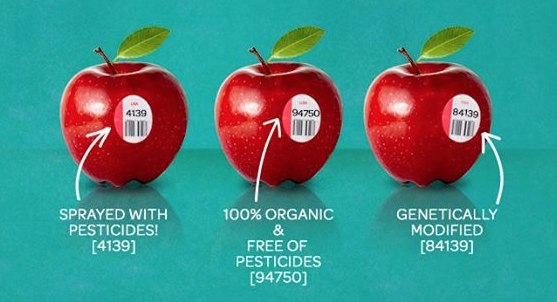There is a lot of lingo thrown at us in the grocery store. From oatmeal magically lowering cholesterol to fat-free peanut butter? Can this be?! These explanations will help you to discover what the labels mean so you can choose the best option. >> I highly recommend going to http://www.fooducate.com/ or downloading the app- you can look up products and see how healthy they are, quick and easy!

Descriptions of Nutrient Claims
- Free – no amount of or a trivial amount of calories, fat, saturated fat, cholesterol or sodium; calorie-free is defined as less than 5 calories per serving
- Good source – is defined as 10-19% of daily value of a certain nutrient per serving
- High – is defined as more than 20% of daily value of a certain nutrient per serving
- Less – is defined as containing 25% less of a certain nutrient than a standard food
- Light – is defined as containing 1/3 less calories or 1/2 fat of a standard food (is this a good thing!? beware of crazy ingredients on the label that you don’t recognize, it is likely a fake sweetener that is illegal in other countries and linked to cancer!)
- Low – is defined in certain nutrient terms
- low fat – 3 grams or less per serving
- low saturated fat – 1 gram or less per serving
- low sodium – 140 mg or less per serving
- low calorie – 40 calories or less per serving
- more – is defined as containing 10% of nutrient daily value when compared to a standard food
Beware of TRANS FAT
Aka hydrogenated oils or mono or diglycerides on the ingredients label. Food labels are allowed to say that they have 0g trans fat per serving if there is less than 0.5g trans fat per serving. However, it is likely that the serving size is ridiculously small (like on non-stick cooking spray). If you see hydrogenated oil or mono or di glycerides I would not recommend purchasing the product.

Organic Or Natural?

- Natural: a product that has no artificial ingredient or added color and is minimally processed. Although consumers purchasing “natural” meat, poultry, and eggs can be happy that there are no artificial ingredients or colors added, it’s important to remember “natural” does not mean hormone-free or antibiotic-free; these are separate labels, also regulated by the USDA.
- Organic: certified organic and contain at least 95% organic content. Organic food is produced using approved organic farming methods “that foster cycling of resources, promote ecological balance, and conserve biodiversity. Specifically, “synthetic fertilizers, sewage sludge, irradiation, and genetic engineering may not be used” to produce organic food, meaning that organic food products are not genetically modified and have not been treated with synthetic pesticides or fertilizers
PLU Codes:

You know, those numbers that every food in the produce department has? They mean something!
- 4 digit codes: conventionally grown
- 5 digit code that starts with a ‘9’ : organically grown
- 5 digit code that starts with a ‘8’ : Genetically Modified Organism *avoid* unfortunately, I have never seen this used. GMOs are secretive and discretely used in packaged items as corn and soy oil. Good luck to us Americans! Hope GMOs are clearly labeled soon!
Food Label Health Claims – those foods making health claims must follow the following criteria:
- must be a naturally good source of at least one of the following nutrients – vitamin A, vitamin C, iron, calcium, protein, or fiber
- foods containing more than 20% daily value of total fat, saturated fat, cholesterol, or sodium cannot carry health claims

- Calcium and osteoporosis
- Fat and cancer
- Fiber containing products such as vegetables, fruits, grains and cancer
- Fiber containing products and heart disease
- Fruits and vegetables and cancer
- Folic acid and neural tube defects
- Saturated fat and cholesterol and heart disease
- Sodium and hypertension
- Whole grains and heart disease & cancer
- Sugar alcohols and tooth decay
- Soluble fiber and heart disease
- Soy protein and heart disease
- Plant sterol and heart disease
- Potassium and hypertension & stroke